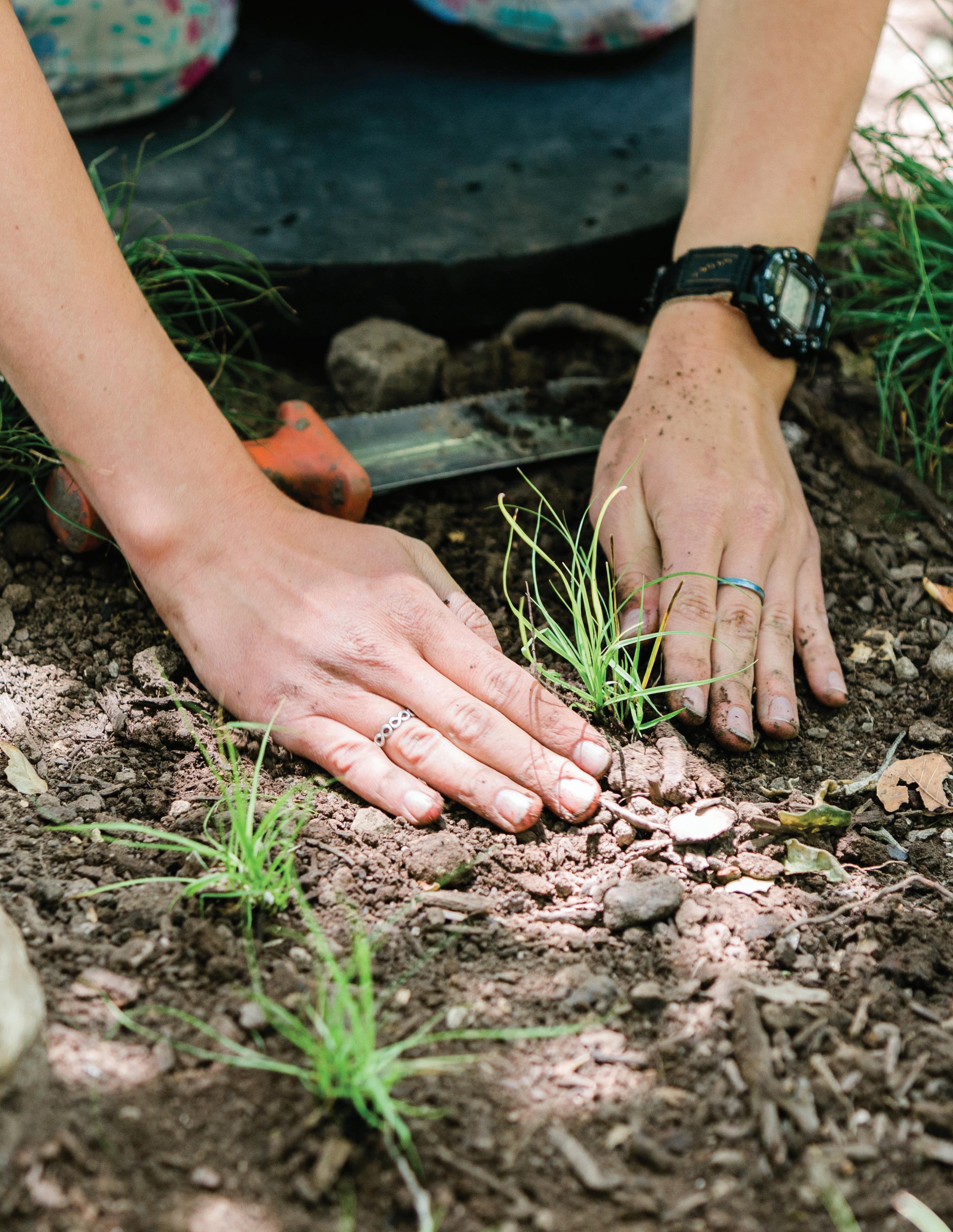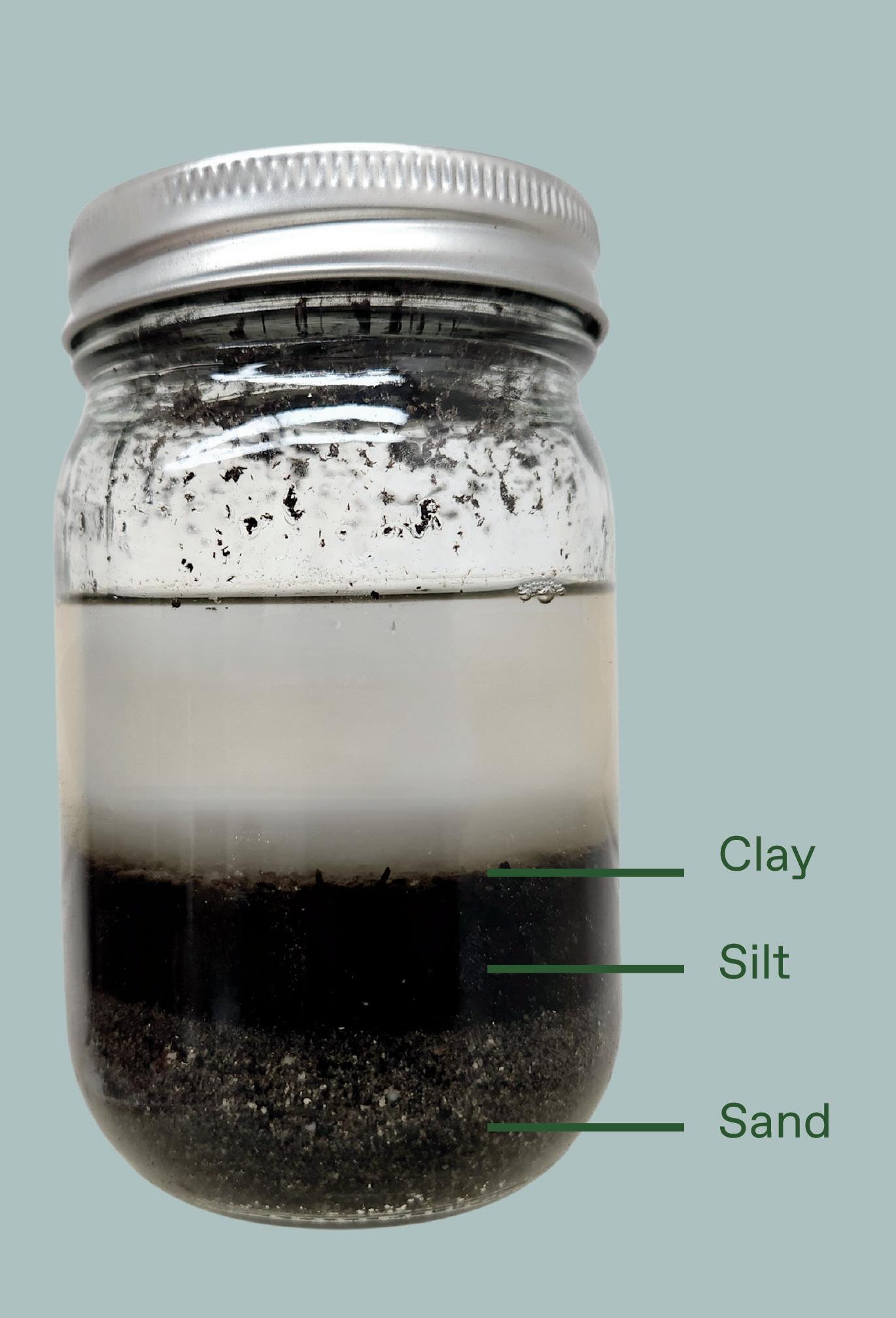
2 minute read
The Budding Botanist: Get To Know the Soil at Your Site
By Michelle Cyr, Youth and Family Programs Manager
Sand, Silt, Clay — Oh My!
Soils, like plants, are complex, with no single way to treat them. Getting to know your soil is one of the first steps to better understand how to grow a native garden that’s ideal for your space. Soils can be made up of three types of particles, each with different effects on a soil’s properties.
Sandy Soils: Larger particles that allow water to easily drain. Gritty. Good aeration. Generally low ability to hold nutrients.
Clay Soils: Small particles that retain water and nutrients. Sticky when wet. Easily compacted.
Silty Soils: Medium particles that are in between sandy and clay soils for water drainage and aeration. Smooth when wet.

Soil Texture Test
The amount of sand, silt, and clay your site has can dramatically impact the types of plants that will thrive in your garden. Follow these steps to perform a simple soil texture test for your garden:
Materials
Clear jar with lid
Dish soap
Water
Ruler
Steps
1. Collect Soil Sample: Fill roughly one-third of jar with soil, being sure to collect from underneath leaf litter or mulch and to remove or sift out large debris
2. Add Water and Soap: Fill the rest of the jar with water and add a few drops of dish soap
3. Shake Well: Close the jar tightly and shake vigorously for 2 to 3 minutes
4. Let Settle: Let jar sit undisturbed for 24 hours
5. Check Layers: After settling, you should see three distinct layers, with clay composing the topmost layer, silt in the middle, and sand at the bottom
6. Measure Particles: Use a ruler to measure the height of each layer, and then calculate the percentage of sand, silt, and clay
Understanding your soil is one of many ways you can enhance your gardening skills to best determine the right plants for your place.
To learn other ways to better understand your soil and site, check out Stephanie Ranes’ article “An Ode to Soil: My Journey With Dirt” on page 3 or visit the Garden’s “Get Horticulture’d” playlist on YouTube.










